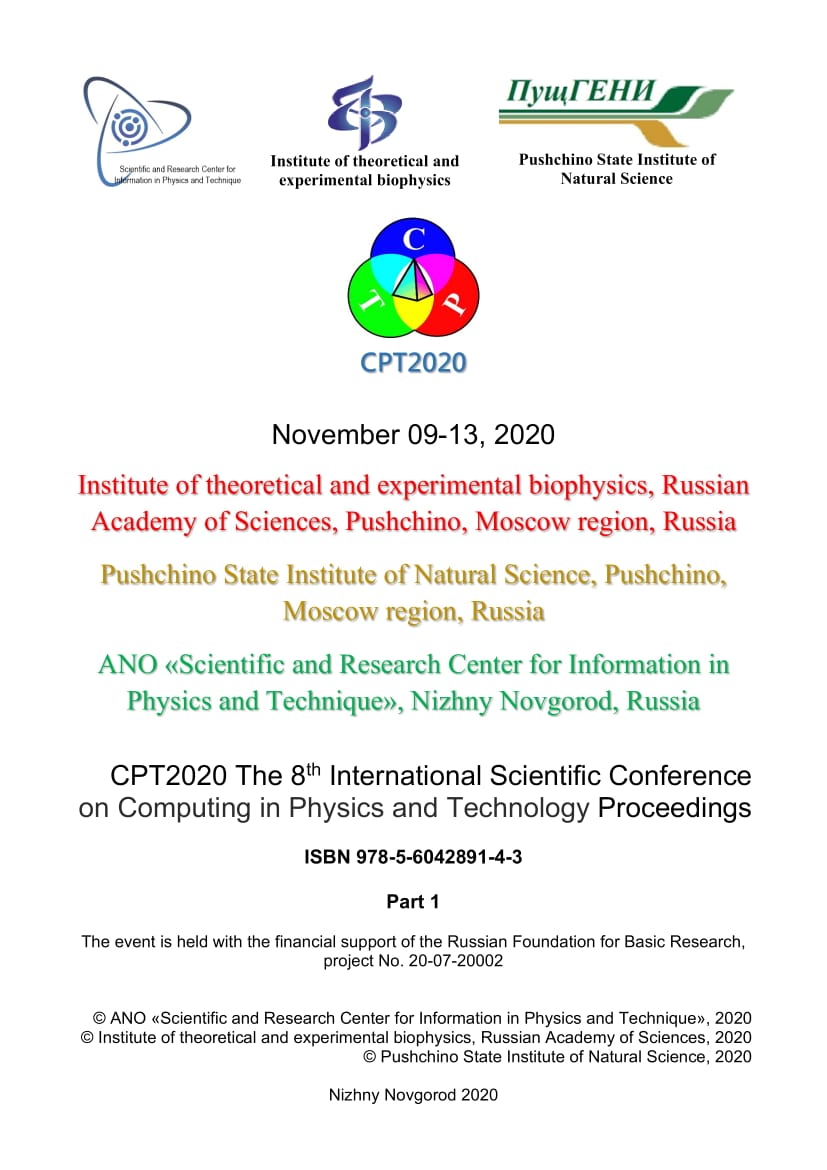Nizhny Novgorod, Russian Federation
BISAC MAT012000 Geometry / General
Methods of 3D object model creation on the basis of unstructured (sparse) cloud of points are considered in the paper. The issues of combining point cloud compaction methods and subsequent surface generation are described. The comparative analysis of generation surfaces algorithms for the purpose of revealing of more effective method using as input data the depth maps received from the sparse cloud of points is carried out. The comparison is made by qualitative, quantitative and temporal criteria. The optimal method of 3D object model creation on the basis of unstructured (sparse) cloud of points and depth map data is chosen. The mathematical description of the point cloud compaction method on the basis of stereo-matching with application of two-phase algorithm of species search and depth map extraction from Multi-View Stereo for Community Photo Collections source image set is provided. The implementation of the method in open-source software Regard3D is realized in practice.
3D model photogrammetry, surface generation, point cloud, depth maps
1. Sosnina, O., Filinskikh, A.; Lozhkina, N.: Analysis of the virtual nontrivial forms models creation methods (in Russian). Information technologies, T. 25. (11), pp. 679-681 (2019).
2. Sosnina, O., Filinskikh, A., Korotaeva, A.S.: Comparison of the low-polygonal 3D model creation methods (in Russian). Information technologies, T. 23(8), pp. 564-568 (2017).
3. Malysheva, A., Tomchinskaya, T.: Features of the low-polygon modeling and texturing in the mobile applications (in Russian). CONFERENCE KOGRAF-2019, ISBN 978-5-502-01200-3, p. 51-54.
4. Westoby, Matthew J., et al.: Structure-from-Motion’photogrammetry: A low-cost, effective tool for geoscience applications. Geomorphology, 179, pp. 300-314 (2012).
5. Kublanov V. and others: Biomedical signals and images in digital healthcare: storage, processing and analysis: a training manual (in Russian), pp. 193-195, (2020).
6. Snavely K.: Scene reconstruction and visualization from internet photo collections. USA : University of Washington, (2008).
7. Fuhrmann, Simon, Fabian Langguth, and Michael Goesele: Mve-a multi-view reconstruction environment. GCH (2014).
8. Clustering views for multiple stereo views (CMVS), https://www.di.ens.fr/cmvs/.Last accessed 10 May 2020.
9. Furukawa Y., Ponce J.: Accurate, Dense, and Robust Multi-View Stereopsis (PMVS). IEEE Computer Society Conference on Computer Vision and Pattern Recognition (2007).
10. Langguth F. et al.: Shading-aware multi-view stereo. European Conference on Computer Vision, Springer, Cham, pp. 469-485 (2016).
11. Seitz S. M. et al.: A comparison and evaluation of multi-view stereo reconstruction algorithms. 2006 IEEE computer society conference on computer vision and pattern recognition (CVPR'06), T.1, pp. 519-528 (2006).
12. Goesele M. et al.: Multi-view stereo for community photo collections.2007 IEEE 11th International Conference on Computer Vision, pp. 1-8 (2007).
13. Voronin, V, Fisunov, A., Marchuk, V., Svirin, I., Petrov, S.: Restoration of the depth map based on the combined processing of a multi-channel image (in Russian). Modern problems of science and education, 6, (2014).
14. Greedy algorithms, https://habr.com/ru/post/120343/. Last accessed 26 June 2020.
15. Basics of Stereo Vision, https://habr.com/ru/post/130300/. Last accessed 26 May 2020.
16. Curless B., Levoy M.: A volumetric method for building complex models from range images. Proceedings of the 23rd annual conference on Computer graphics and interactive techniques, pp. 303-312 (1996).
17. Fuhrmann S., Goesele M.: Fusion of depth maps with multiple scales. ACM Transactions on Graphics (TOG), T. 30 (6), pp. 1-8 (2011).
18. Fuhrmann S., Goesele M.: Floating scale surface reconstruction. ACM Transactions on Graphics (ToG), T. 33 (4), pp. 1-11 (2014).
19. Kazhdan M., Hoppe H.: Screened poisson surface reconstruction. ACM Transactions on Graphics (ToG), T. 32 (3), pp. 1-13 (2013).
20. Kazhdan M., Bolitho M., Hoppe H.: Poisson surface reconstruction. Proceedings of the fourth Eurographics symposium on Geometry processing, T. 7, (2006)





